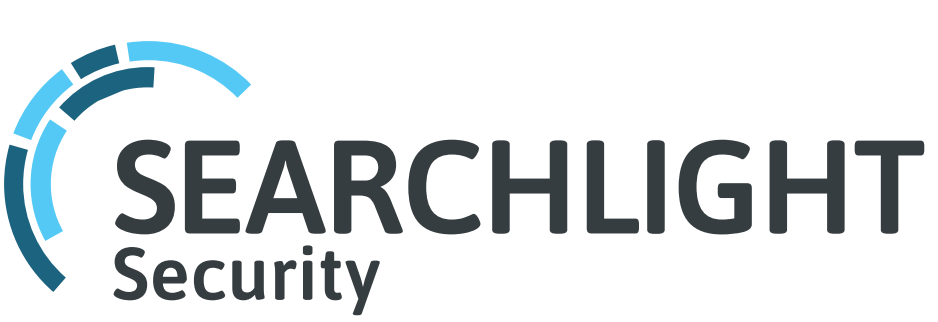Ransomware Surge: A Growing Threat in the Digital Shadows
September 3, 2024, 10:07 pm

Location: United Kingdom, England, London
Employees: 5001-10000
Founded date: 2013
The digital landscape is shifting. A new report from Searchlight Cyber reveals a staggering 56% increase in active ransomware groups compared to last year. This surge paints a grim picture for cybersecurity professionals. The shadows are growing darker, and the threats are multiplying.
Ransomware is no longer just a nuisance; it’s a full-blown crisis. The report highlights that over 70 active groups are now lurking in the digital underbelly. These groups are not just expanding; they are diversifying. Smaller, lesser-known players are emerging, capable of executing highly targeted attacks. The landscape is becoming a minefield.
At the forefront of this chaos is the LockBit group. Despite facing setbacks from law enforcement operations like Operation Cronos, LockBit remains the heavyweight champion of ransomware. With 434 recorded victims, it still holds the crown. However, this number is down from 525 victims in the first half of 2023. This decline hints at the effectiveness of recent crackdowns. Yet, the threat remains palpable.
Behind LockBit, a new contender has emerged: RansomHub. This group burst onto the scene in February 2024 and quickly climbed to the third spot in the rankings. Its rapid rise suggests it may have ties to established players, possibly even LockBit itself. The emergence of RansomHub signals a new era in ransomware. It’s a reminder that the enemy is evolving.
Other notable groups include Play, BlackBasta, and 8Base. Together, they account for 473 victims. The diversity among these groups is alarming. Each has its own tactics, techniques, and targets. This fragmentation complicates the task for cybersecurity professionals. They must now navigate a labyrinth of threats.
The report also introduces new names to watch: Darkvault, APT73, and Quilong. These groups emerged between February and April 2024. Darkvault and Quilong are suspected of operating as Ransomware-as-a-Service (RaaS) entities, selling ransomware code to the highest bidder. APT73, however, is an anomaly. It operates both on the dark web and the clear web, blurring the lines between legitimate and illicit activities.
The implications of this surge are profound. A staggering 83% of businesses reported suffering ransomware attacks last year. Of those, 46% faced four or more attacks. The statistics are sobering. The financial toll is equally staggering. In the first half of 2024 alone, ransomware payments reached a record $459.8 million. This trend shows no signs of slowing down.
Cybersecurity experts warn that organizations must adapt. Continuous monitoring of the ransomware ecosystem is crucial. Identifying the groups that pose the greatest risk is essential. Threat intelligence must inform defensive strategies. The stakes are high, and the cost of inaction is steep.
The rise of Ransomware-as-a-Service is particularly concerning. This model allows even the least skilled criminals to launch attacks. It democratizes cybercrime, making it accessible to anyone with malicious intent. The barriers to entry have never been lower.
Yet, there is a glimmer of hope. The overall number of listed ransomware victims has declined compared to the second half of 2023. This suggests that law enforcement efforts may be starting to bear fruit. Operations like Cronos are disrupting established groups. However, the emergence of new players means the battle is far from over.
As the ransomware landscape evolves, so must our defenses. Organizations need to invest in robust cybersecurity measures. They must foster a culture of awareness and preparedness. Training employees to recognize phishing attempts and suspicious activities is vital. Cyber hygiene is no longer optional; it’s a necessity.
The digital world is a battleground. Ransomware groups are the enemy, lurking in the shadows, waiting for the next opportunity to strike. The fight against them requires vigilance, innovation, and collaboration. Cybersecurity professionals must work together, sharing intelligence and strategies. The more we know about these groups, the better equipped we are to defend against them.
In conclusion, the surge in ransomware groups is a wake-up call. The threat is real, and it’s growing. Organizations must take proactive steps to protect themselves. The digital landscape is fraught with danger, but with the right strategies, we can navigate it. The battle against ransomware is ongoing, and every day counts. The shadows may be deep, but together, we can shine a light on the threat.
Ransomware is no longer just a nuisance; it’s a full-blown crisis. The report highlights that over 70 active groups are now lurking in the digital underbelly. These groups are not just expanding; they are diversifying. Smaller, lesser-known players are emerging, capable of executing highly targeted attacks. The landscape is becoming a minefield.
At the forefront of this chaos is the LockBit group. Despite facing setbacks from law enforcement operations like Operation Cronos, LockBit remains the heavyweight champion of ransomware. With 434 recorded victims, it still holds the crown. However, this number is down from 525 victims in the first half of 2023. This decline hints at the effectiveness of recent crackdowns. Yet, the threat remains palpable.
Behind LockBit, a new contender has emerged: RansomHub. This group burst onto the scene in February 2024 and quickly climbed to the third spot in the rankings. Its rapid rise suggests it may have ties to established players, possibly even LockBit itself. The emergence of RansomHub signals a new era in ransomware. It’s a reminder that the enemy is evolving.
Other notable groups include Play, BlackBasta, and 8Base. Together, they account for 473 victims. The diversity among these groups is alarming. Each has its own tactics, techniques, and targets. This fragmentation complicates the task for cybersecurity professionals. They must now navigate a labyrinth of threats.
The report also introduces new names to watch: Darkvault, APT73, and Quilong. These groups emerged between February and April 2024. Darkvault and Quilong are suspected of operating as Ransomware-as-a-Service (RaaS) entities, selling ransomware code to the highest bidder. APT73, however, is an anomaly. It operates both on the dark web and the clear web, blurring the lines between legitimate and illicit activities.
The implications of this surge are profound. A staggering 83% of businesses reported suffering ransomware attacks last year. Of those, 46% faced four or more attacks. The statistics are sobering. The financial toll is equally staggering. In the first half of 2024 alone, ransomware payments reached a record $459.8 million. This trend shows no signs of slowing down.
Cybersecurity experts warn that organizations must adapt. Continuous monitoring of the ransomware ecosystem is crucial. Identifying the groups that pose the greatest risk is essential. Threat intelligence must inform defensive strategies. The stakes are high, and the cost of inaction is steep.
The rise of Ransomware-as-a-Service is particularly concerning. This model allows even the least skilled criminals to launch attacks. It democratizes cybercrime, making it accessible to anyone with malicious intent. The barriers to entry have never been lower.
Yet, there is a glimmer of hope. The overall number of listed ransomware victims has declined compared to the second half of 2023. This suggests that law enforcement efforts may be starting to bear fruit. Operations like Cronos are disrupting established groups. However, the emergence of new players means the battle is far from over.
As the ransomware landscape evolves, so must our defenses. Organizations need to invest in robust cybersecurity measures. They must foster a culture of awareness and preparedness. Training employees to recognize phishing attempts and suspicious activities is vital. Cyber hygiene is no longer optional; it’s a necessity.
The digital world is a battleground. Ransomware groups are the enemy, lurking in the shadows, waiting for the next opportunity to strike. The fight against them requires vigilance, innovation, and collaboration. Cybersecurity professionals must work together, sharing intelligence and strategies. The more we know about these groups, the better equipped we are to defend against them.
In conclusion, the surge in ransomware groups is a wake-up call. The threat is real, and it’s growing. Organizations must take proactive steps to protect themselves. The digital landscape is fraught with danger, but with the right strategies, we can navigate it. The battle against ransomware is ongoing, and every day counts. The shadows may be deep, but together, we can shine a light on the threat.
